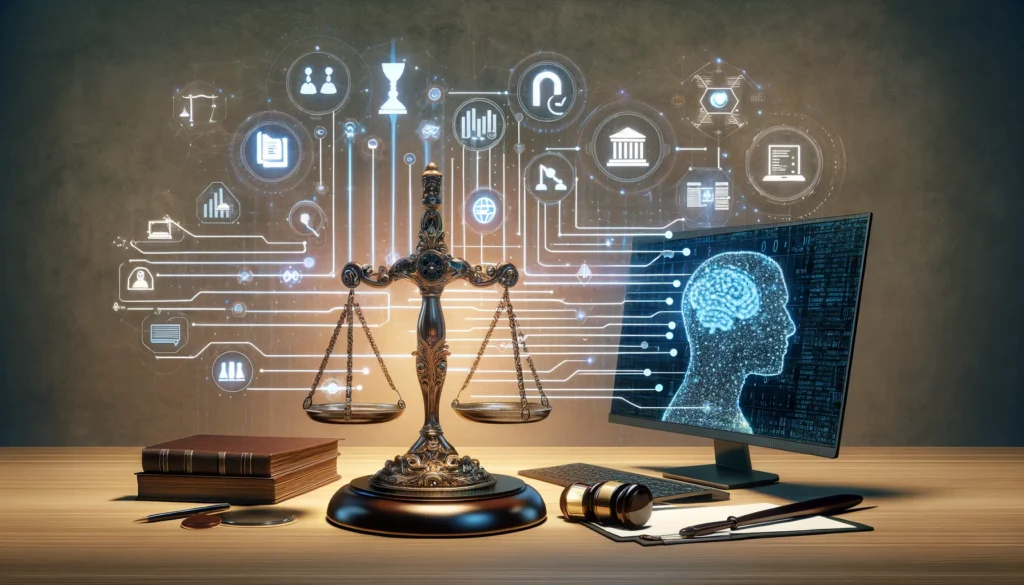
Setting the Stage: The Evolution of Compliance Tools
Corporate compliance has long relied on traditional measures such as manual audits, checklists, and regulatory databases. These methods, while foundational, are increasingly beleaguered by the sheer volume of regulatory data and growing complexity of global compliance norms.
Enter Artificial Intelligence (AI) and, more specifically, ChatGPT, a significant leap forward in compliance technology. Leveraging ChatGPT for corporate compliance unfolds innovative possibilities and revolutionizes how firms manage regulatory requirements and risk.
Recognizing ChatGPT’s potential to streamline and optimize compliance tasks sets the framework for your organization to adopt this next-gen tool effectively.
Understanding the Basics: How ChatGPT Works
To fully leverage ChatGPT, it is essential to grasp its underlying architecture and functionality. ChatGPT is built on the GPT (Generative Pre-trained Transformer) architecture, a type of Large Language Model (LLM) that understands and generates human-like text based on deep learning techniques. These models are trained on diverse datasets, enabling them to provide relevant and context-aware responses.
The suitability of ChatGPT for compliance tasks lies in its ability to process and analyze large volumes of text-based data quickly and accurately. It can comprehend complex regulatory language, perform document reviews, and pull relevant information from extensive corpora, making it an invaluable asset for compliance professionals.
ChatGPT’s ability to handle natural language queries makes it particularly adept at tasks such as conducting background checks, reviewing documents, and performing due diligence, thus positioning itself as a versatile tool for corporate compliance.
Onboarding ChatGPT: Getting Started Quickly
Integrating ChatGPT into your corporate compliance framework can be straightforward. Begin by setting up the necessary infrastructure and configurations. This involves:
- Setting Up: Deploy ChatGPT on a secure server or opt for a cloud-based solution.
- Required Integrations: Ensure integration with existing compliance software and data sources for seamless operation.
- Initial Configurations: Tailor initial settings to align with your firm’s specific compliance requirements.
The user interface is designed to be intuitive, allowing for easy navigation and command input. Familiarize your team with basic commands to maximize efficiency from the outset.
With the setup complete, you’re ready to begin crafting the perfect prompts to unlock ChatGPT’s full potential.
Crafting the Perfect Prompts: Unlocking Efficiency
The success of using ChatGPT for compliance tasks hinges on the quality of prompts used. Tailored prompts ensure that the responses are both accurate and valuable. Here’s how to create effective prompts for common compliance activities:
- Background Checks: “Provide a summary of John Doe’s professional history, focusing on any legal issues or compliance violations.”
- Document Reviews: “Review this contract and highlight any clauses that pose compliance risks under GDPR.”
- Due Diligence: “Compile a list of regulatory filings and any discrepancies for ABC Corporation over the past five years.”
When crafting prompts, aim for specificity to minimize errors. Initial inputs might need iterative refinements. For example, adjust your prompts based on the feedback and results you receive:
Initial Prompt: “Review this contract.”
Refined Prompt: “Review this contract for compliance with international labor laws, focusing on Sections 2, 5, and 7.”
Continuous improvement of prompts ensures that ChatGPT remains aligned with your evolving compliance needs.
By crafting precise and nuanced prompts, you pave the way for automating routine checks effectively.
Automating Routine Checks: Practical Techniques
One of ChatGPT’s most significant benefits is automating routine compliance tasks, freeing up valuable time for your team. Here’s how:
- Regulatory Updates: Use ChatGPT to automate the monitoring of regulatory updates. For instance, prompt it to provide weekly summaries of changes in relevant laws or regulations.
- Bulk Processing: For large datasets or documents, employ batch processing techniques. Command ChatGPT to perform simultaneous reviews, significantly reducing the time needed for manual audits.
- Daily Audits: Incorporate automated daily checks, such as “List any new compliance issues identified in the last 24 hours.”
These techniques ensure that routine compliance activities are handled efficiently, leaving your team to focus on more complex tasks.
With routine checks automated, you can turn your attention to more advanced and in-depth due diligence processes.
Enhancing Due Diligence: Advanced Prompt Strategies
For deeper investigations and thorough due diligence, deploying advanced prompt strategies with ChatGPT proves highly beneficial. Consider the following methods:
- Advanced Queries: Use complex prompts for nuanced inquiries like “Analyze the financial stability and regulatory compliance of XYZ Corporation over the past decade.”
- Combining Data Sources: Prompt ChatGPT to pull and integrate information from multiple sources, enhancing the comprehensiveness of your due diligence efforts.
Example Scenarios:
- “Cross-reference the SEC filings with financial reports for inconsistencies in ABC Ltd.”
- “Summarize any legal litigations involving XYZ Corp and analyze their compliance impact.”
These advanced strategies help ensure that your due diligence processes are thorough and robust.
Nevertheless, accuracy remains paramount, necessitating validation and verification of ChatGPT’s outputs.
Ensuring Accuracy: Validation and Verification
To ensure the reliability of ChatGPT’s outputs, it is vital to validate and verify the information. Employ these best practices:
- Validation Methods: Cross-reference ChatGPT’s outputs with multiple sources to confirm their accuracy.
- Human Oversight: Incorporate human reviews to catch any nuances that AI might miss, combining machine efficiency with human insight.
- Quality Control: Regularly audit ChatGPT’s performance to maintain high standards and adjust prompts as necessary.
Accurate outputs lead to efficient compliance documentation, streamlining the creation of reports and summaries.
Compliance Documentation: Streamlining Reports and Summaries
ChatGPT excels in generating and formatting detailed compliance reports. Utilize prompts such as “Generate a compliance audit report for Q1 2023 focusing on GDPR adherence.”
- Executive Summaries: Command ChatGPT to distill lengthy reports into concise executive summaries, saving time for senior management.
- Action Items: Generate actionable compliance items by prompting, “List top five compliance actions required based on the latest audit.”
Organized documentation ensures ease of access and review, streamlining compliance workflows.
However, as with any AI tool, addressing security and ethical considerations is crucial.
Addressing Security and Ethical Concerns
Integrating AI tools like ChatGPT necessitates a focus on data security and ethical use:
- Data Privacy: Ensure compliance with data privacy laws such as GDPR by controlling data access and managing retention policies efficiently.
- Ethical Use: Establish guidelines to prevent misuse of AI-driven insights and maintain transparency with stakeholders.
- Risk Mitigation: Regularly assess and update security protocols to protect against data breaches and other risks.
Addressing these concerns safeguards your firm while leveraging AI for compliance.
Looking ahead, staying abreast of AI advancements ensures your compliance processes remain cutting-edge.
Future Trends: The Evolving Role of AI in Compliance
AI continues to evolve, promising even greater integration into compliance workflows:
- Advancements: Anticipate enhancements in natural language processing and machine learning to further refine ChatGPT’s capabilities.
- Staying Updated: Engage with tech communities, attend industry conferences, and participate in webinars to remain current with AI innovations.
- Preparing for Integration: Proactively plan for incorporating emerging tools and updates, ensuring a smooth transition as technologies evolve.
By staying informed, your organization can maintain a competitive edge in compliance management.
Wrapping Up: Takeaways and Next Steps
In summary, leveraging ChatGPT for corporate compliance revolutionizes traditional practices with efficiency and precision. Key takeaways include:
- Understanding ChatGPT’s architecture and functionality
- Onboarding and configuring it for compliance tasks
- Crafting tailored prompts for optimal outputs
- Automating routine checks and enhancing due diligence
- Ensuring accuracy through validation and oversight
- Streamlining compliance documentation
- Addressing security and ethical concerns
- Staying updated with AI advancements
For immediate implementation, paralegals should start by configuring ChatGPT, experiment with prompt creation, and gradually integrate it into daily compliance workflows. Continuous experimentation and innovation will help maximize the tool’s benefits.


